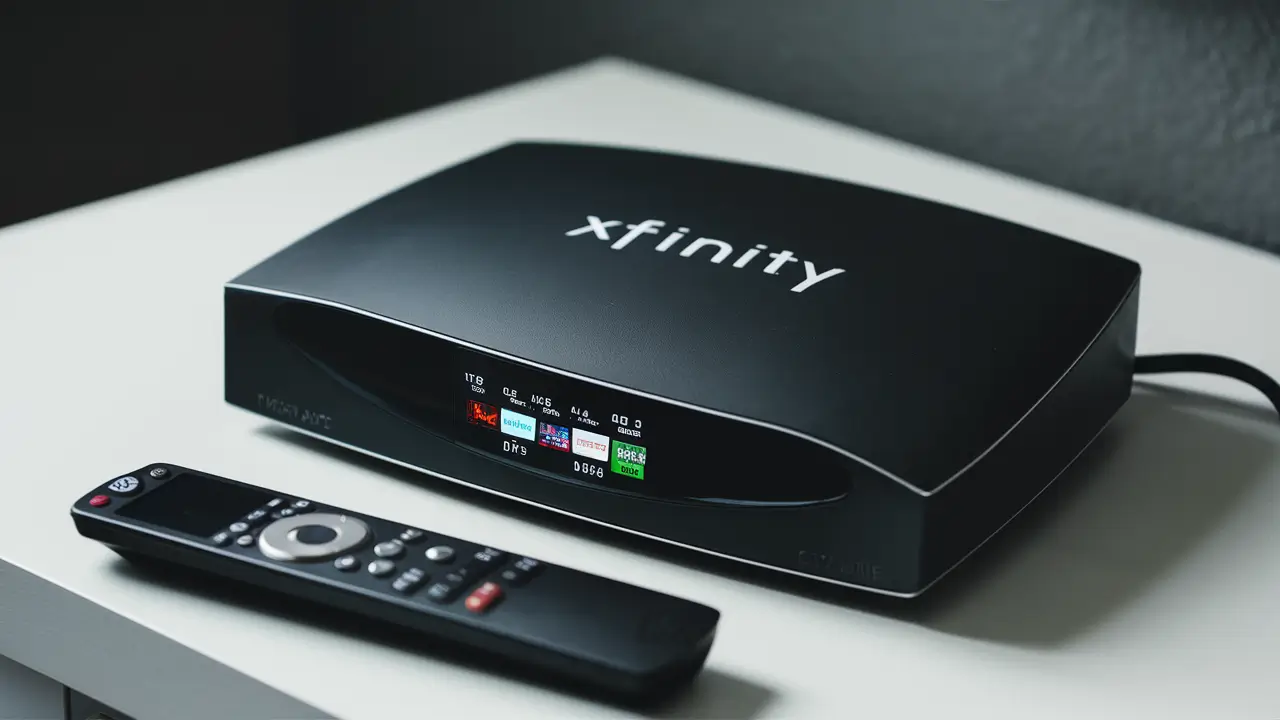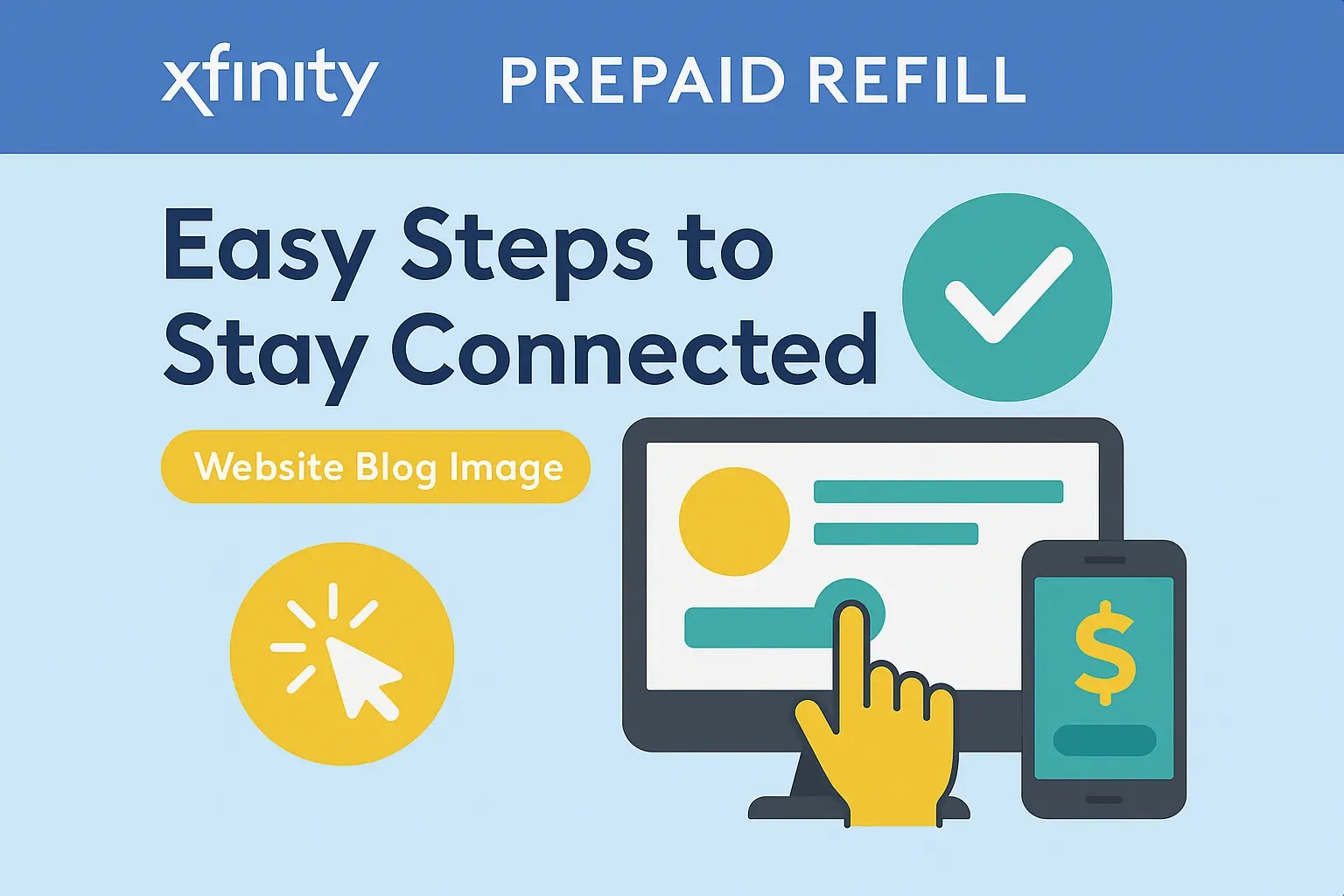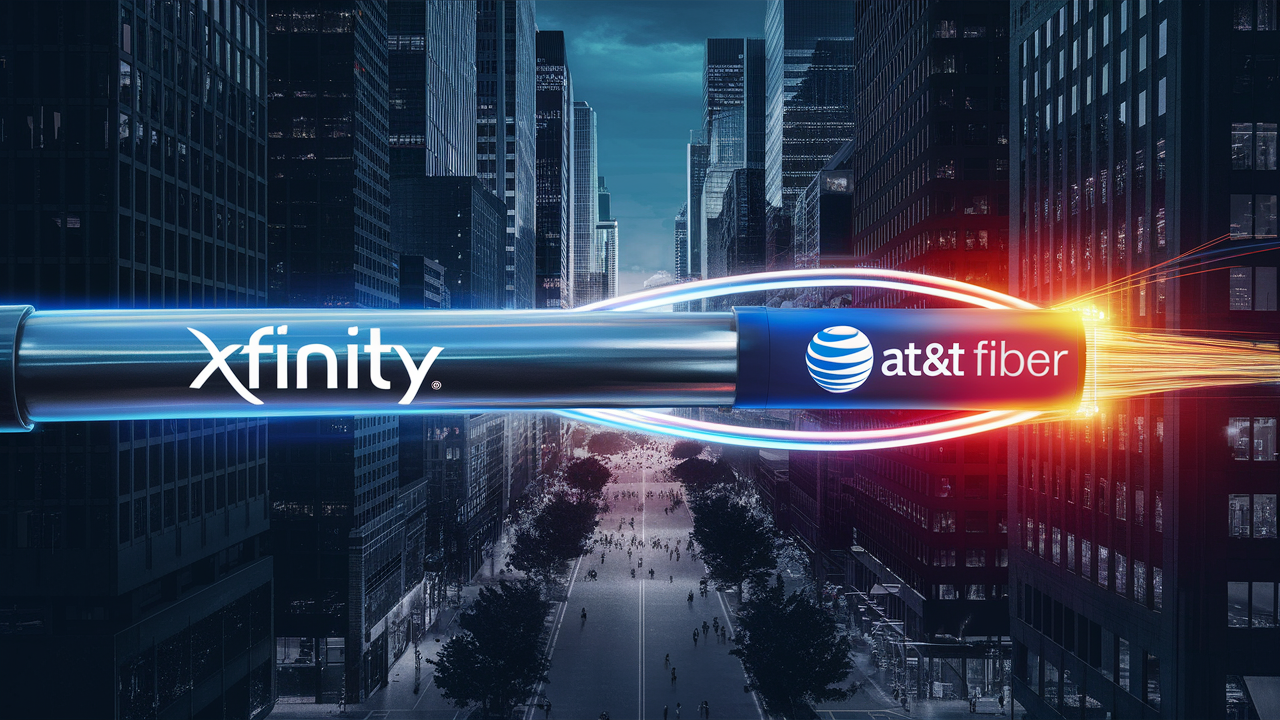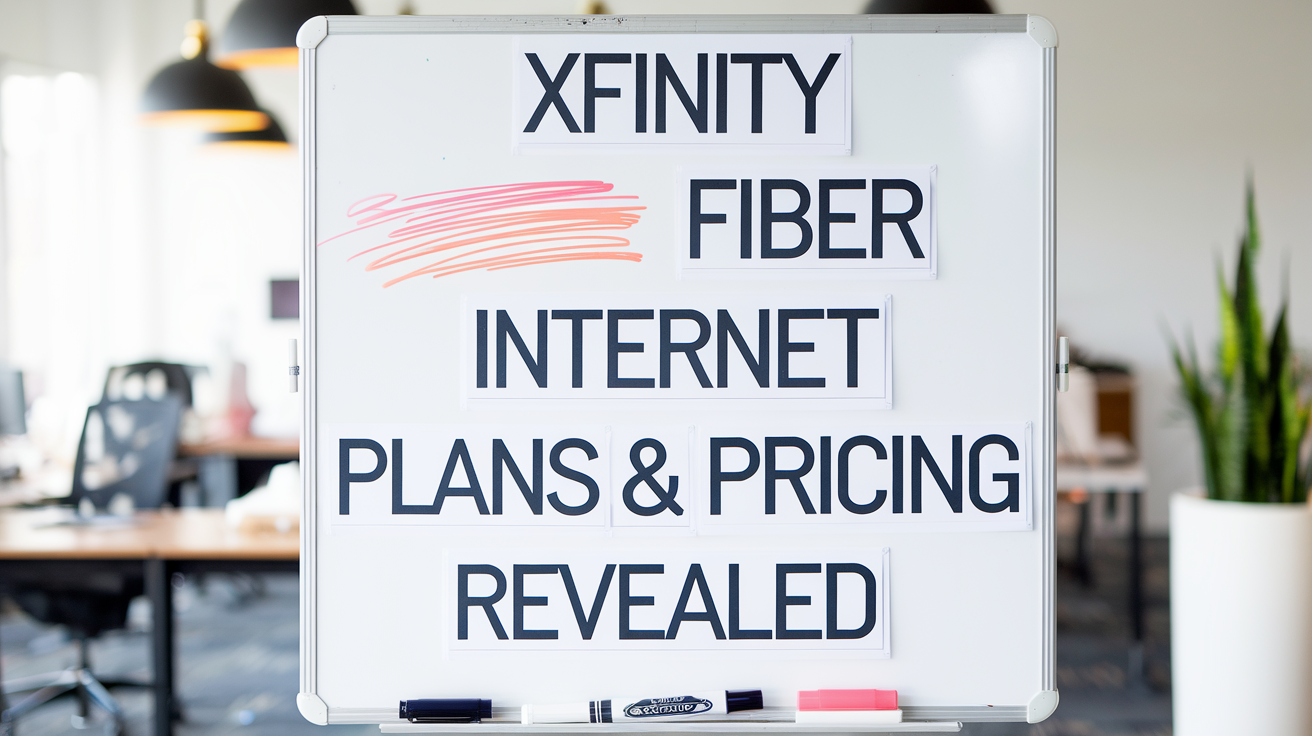How To Connect Xfinity Cable Box?

Connecting your Xfinity cable box is a straightforward process. This guide provides a comprehensive, step-by-step walkthrough for setting up your Xfinity cable box, covering essential connections, activation, and troubleshooting. Learn how to get your entertainment system up and running smoothly in 2025.
A Seamless Setup: Your Complete Guide to Connecting an Xfinity Cable Box
In today's interconnected world, reliable home entertainment is paramount. For millions of households, Xfinity serves as the primary gateway to a vast universe of television channels, on-demand content, and streaming services. At the heart of this experience lies the Xfinity cable box, a device that, while seemingly simple, requires proper connection and setup to function optimally. This comprehensive guide is designed to demystify the process of connecting your Xfinity cable box, ensuring you can enjoy your favorite shows and movies without a hitch. We'll delve into everything from the basic physical connections to the crucial activation steps, providing clear, actionable advice tailored for the modern user. As of 2025, the technology behind cable boxes continues to evolve, offering enhanced features and more streamlined connectivity. Understanding these advancements and how to leverage them is key to maximizing your entertainment potential. Whether you're a new Xfinity subscriber or looking to reconfigure your existing setup, this article will equip you with the knowledge to connect your Xfinity cable box with confidence and efficiency. We'll explore the different types of connections available, common pitfalls to avoid, and tips for ensuring a stable and high-quality viewing experience. By the end of this guide, you'll be well-equipped to handle the setup process, troubleshoot minor issues, and truly unlock the full capabilities of your Xfinity service.
The importance of a correct setup cannot be overstated. A poorly connected cable box can lead to a host of frustrating issues, including pixelation, audio disruptions, intermittent signal loss, and even a complete lack of service. In 2025, with the increasing reliance on high-definition and 4K content, the integrity of your cable connections directly impacts the quality of your viewing experience. Furthermore, many modern cable boxes integrate smart features, Wi-Fi connectivity, and voice control capabilities, all of which depend on a solid foundational setup. This guide aims to be your definitive resource, covering all the necessary steps with clarity and precision. We understand that technical jargon can sometimes be intimidating, so we've broken down the process into easily digestible sections, complete with visual cues and practical advice. Our goal is to empower you, the user, to take control of your home entertainment setup and enjoy a seamless transition into the world of Xfinity programming.
Understanding Your Xfinity Cable Box and Its Components
Before diving into the connection process, it's essential to familiarize yourself with the different components of your Xfinity cable box setup. Understanding what each part does will make the connection process much smoother and help you identify potential issues more effectively. Xfinity offers a range of cable boxes, from basic models to advanced DVRs (Digital Video Recorders) and streaming-enabled devices. While specific models may vary, the core components and connection types remain largely consistent.
The Cable Box Unit
This is the central device that receives the cable signal from your provider and decodes it for your television. Modern Xfinity boxes often feature sleek designs and advanced functionalities. Depending on your subscription, your box might be a simple set-top box for basic channels, a DVR for recording programs, or a gateway device that also provides internet service.
The Power Adapter
Every cable box requires power to operate. The power adapter is typically a brick-shaped device that plugs into a wall outlet and connects to the cable box via a power port. Ensure you use the original power adapter supplied by Xfinity, as using an incompatible adapter can damage the device or cause performance issues.
Coaxial Cable
This is the primary cable that brings the television signal from your wall outlet to the cable box. Coaxial cables are characterized by their round shape, with a central conductor surrounded by insulation, a braided metal shield, and an outer jacket. They typically have screw-on connectors (F-connectors) at each end. A secure connection of the coaxial cable is crucial for signal integrity.
HDMI Cable
For modern televisions, an HDMI (High-Definition Multimedia Interface) cable is the standard for transmitting both high-definition video and audio signals from the cable box to your TV. HDMI cables offer superior picture and sound quality compared to older connection types like composite or component cables. Ensure you have a compatible HDMI cable, ideally one rated for the resolution you intend to use (e.g., HDMI 2.0 for 4K content).
Remote Control
Your Xfinity cable box comes with a remote control for navigating menus, changing channels, and accessing features. Some advanced remotes, like the Xfinity Voice Remote, also include voice command capabilities, which require pairing with the cable box.
Ethernet Cable (Optional/Specific Models)
Some Xfinity cable boxes, particularly gateway devices or those with advanced networking features, may have an Ethernet port. This can be used for a wired internet connection, which often provides a more stable and faster connection than Wi-Fi for streaming and online features. However, for basic TV service, it's typically not required for the cable box itself.
Wall Outlet and Connections
You'll need an active cable outlet in your wall where you plan to place the cable box. This outlet is where the main coaxial line from outside your home terminates. Ensure it's not damaged and that there are no obstructions.
The Evolving Landscape of Cable Box Connectivity in 2025
The way we connect and interact with our cable boxes has undergone significant transformations, and 2025 is no exception. The industry is continuously pushing the boundaries of technology to offer more integrated, intelligent, and user-friendly entertainment experiences. Understanding these current trends can help you make informed decisions about your Xfinity setup and leverage the latest features.
The Rise of IP-Based Video Delivery
While traditional coaxial cable remains the backbone for many, there's a growing shift towards Internet Protocol (IP) for video delivery. This means that even cable boxes are increasingly leveraging internet connections for streaming live TV, on-demand content, and accessing apps. Xfinity's own Flex streaming box is a prime example, relying heavily on broadband for its functionality. This trend signifies a convergence of cable and internet services, blurring the lines between traditional cable TV and over-the-top (OTT) streaming. By 2025, expect more cable boxes to have robust internet connectivity as a primary feature, not just an add-on.
Enhanced Smart Home Integration
Cable boxes are no longer just passive entertainment devices. In 2025, they are becoming central hubs for smart home ecosystems. Xfinity's integration with platforms like Google Assistant and Amazon Alexa allows users to control their TV, smart lights, thermostats, and other connected devices using voice commands through their cable box remote. This seamless integration simplifies home management and enhances the overall user experience. Setting up these integrations often requires a stable internet connection and proper pairing procedures, which are becoming increasingly sophisticated.
4K HDR and Immersive Audio Support
The demand for higher quality visuals and audio continues to grow. By 2025, most new Xfinity cable boxes will support 4K Ultra High Definition (UHD) resolution and High Dynamic Range (HDR) content. HDR provides a wider range of colors and contrast, resulting in a more vibrant and lifelike image. Furthermore, support for advanced audio formats like Dolby Atmos is becoming more common, offering a truly immersive sound experience. To fully benefit from these features, you'll need a compatible 4K HDR TV and an HDMI cable that supports the necessary bandwidth (e.g., HDMI 2.1 for the highest frame rates and resolutions).
Cloud-Based DVR and On-Demand Expansion
Traditional DVRs with physical hard drives are gradually being supplemented, and in some cases replaced, by cloud-based DVR solutions. This allows users to record and access their programs from multiple devices, both inside and outside the home. Xfinity's cloud DVR services are expanding, offering greater flexibility and storage capacity. This shift also impacts connectivity, as reliable broadband is essential for seamless cloud access. The expansion of on-demand libraries, powered by these advanced systems, means more content is available instantly than ever before.
Simplified User Interfaces and AI-Driven Recommendations
As technology advances, so does the user interface. Cable boxes in 2025 are featuring more intuitive and customizable interfaces, often powered by artificial intelligence (AI). AI algorithms analyze your viewing habits to provide personalized recommendations for shows, movies, and channels, making it easier to discover new content. Voice control integration further streamlines navigation, allowing you to search for specific titles or genres simply by speaking.
Connectivity Standards and Future-Proofing
The underlying connectivity standards are also evolving. While coaxial and HDMI remain dominant, Wi-Fi 6/6E and the upcoming Wi-Fi 7 are becoming standard in many connected devices, including advanced cable boxes and streaming devices. This ensures faster and more reliable wireless performance for streaming and smart home features. When setting up your Xfinity box, ensure your home network is robust enough to support these evolving demands. Investing in a modern router is often a key component of a future-proofed home entertainment system.
Step-by-Step: Connecting Your Xfinity Cable Box
Connecting your Xfinity cable box involves a series of straightforward steps. By following this guide carefully, you can ensure a successful setup. We'll cover the physical connections, power-up sequence, and initial activation.
Step 1: Unpack and Identify Components
Carefully unpack your Xfinity cable box and all accompanying accessories. Lay out the cable box, power adapter, coaxial cable, HDMI cable, and remote control. Ensure all items are present and free from visible damage. Refer to the user manual if you are unsure about any component.
Step 2: Position Your Cable Box
Choose a location for your cable box that is near your television and an active coaxial wall outlet. Ensure there is adequate ventilation around the box to prevent overheating. Avoid placing it in enclosed cabinets or directly on top of other heat-generating devices.
Step 3: Connect the Coaxial Cable
Take one end of the coaxial cable and screw it firmly onto the "Cable In" or "RF In" port on the back of your Xfinity cable box. Then, take the other end of the coaxial cable and connect it to the active coaxial outlet on your wall. Ensure both connections are snug but do not overtighten, as this can damage the connectors.
Step 4: Connect the HDMI Cable
Plug one end of the HDMI cable into the "HDMI Out" port on the back of your Xfinity cable box. Connect the other end of the HDMI cable to an available HDMI input port on your television. It's a good practice to note which HDMI port you use on your TV (e.g., HDMI 1, HDMI 2) for easy input selection later.
Step 5: Connect the Power Adapter
Plug the small end of the power adapter into the "Power" or "DC In" port on the back of the cable box. Then, plug the other end of the power adapter into a working electrical outlet. Avoid using surge protectors initially, as some can interfere with the initial power-up sequence. Once the box is active, you can move it to a surge protector if desired.
Step 6: Power On Your TV and Cable Box
Turn on your television and select the correct HDMI input source that you used in Step 4. Then, press the power button on your Xfinity cable box (or its remote). The box will begin its startup sequence, which may take several minutes. You should see indicator lights on the front of the box illuminate.
Step 7: Activate Your Cable Box
Once the cable box has completed its startup, you will likely be prompted to activate it. This is a critical step that connects your device to the Xfinity network. Xfinity typically offers several activation methods:
- Online Activation: Visit the Xfinity activation website (usually xfinity.com/activate) on a computer or mobile device. You'll need to log in to your Xfinity account and follow the on-screen instructions.
- Phone Activation: Call the Xfinity activation phone number (often found on the sticker on your cable box or in your welcome kit). Follow the automated prompts or speak with a representative.
- Xfinity App: The Xfinity My Account app may also offer an activation feature.
During activation, you may need to provide your account number or other identifying information. The system will then send a signal to your cable box to provision your services. This process can take anywhere from 5 to 30 minutes. Once activation is complete, your cable box should display a channel guide and allow you to start watching TV.
Step 8: Pair Your Remote Control (If Necessary)
If you have an advanced Xfinity remote (like a Voice Remote), you may need to pair it with your cable box. Follow the on-screen prompts or refer to your remote's manual for specific pairing instructions. This usually involves pressing a combination of buttons on the remote and the cable box.
Comparing Xfinity Cable Box Models and Connectivity Options
Xfinity offers a variety of cable box options, each with different features and connectivity capabilities. Understanding these differences can help you choose the best device for your needs and ensure you're utilizing the most appropriate connection methods. As of 2025, the primary distinctions often lie in recording capabilities, streaming integration, and smart home features.
| Feature | Xfinity Xi Series (Client Boxes) | Xfinity XG1/XG2 (Primary DVRs) | Xfinity Flex (Streaming Box) |
|---|---|---|---|
| Primary Function | Extends service from a primary DVR; requires a main box. | Main gateway for TV service; includes DVR capabilities. | Streaming and app access via broadband; does not receive traditional cable signals. |
| Connectivity (Video Input) | Receives signal via MoCA (Multimedia over Coax Alliance) or Ethernet from primary box. | Coaxial cable input. | None (relies solely on internet). |
| Connectivity (Video Output) | HDMI output to TV. | HDMI output to TV. | HDMI output to TV. |
| Recording Capability | No independent recording; uses DVR storage of the primary box. | Built-in DVR (storage varies by model). Supports cloud DVR features. | No traditional recording; relies on streaming service DVRs or cloud storage. |
| Internet Requirement | Requires Xfinity internet for full functionality (MoCA networking). | Does not strictly require Xfinity internet for basic TV, but needed for On Demand, apps, and advanced features. | Mandatory; requires robust broadband connection. |
| Smart Features/Apps | Access to apps and voice control via primary box. | Access to apps, voice control, and smart home integration. | Primary focus is on apps (Netflix, Hulu, Peacock, etc.), voice control, and smart home integration. |
| Typical Setup | Connect via HDMI to TV, then connect to primary box via coaxial or Ethernet. | Connect via coaxial to wall outlet, HDMI to TV, and power. | Connect via HDMI to TV, Ethernet or Wi-Fi to router, and power. |
When connecting, pay close attention to the specific ports available on your model. For instance, if you have an Xi client box, its connection to the main XG1 DVR is crucial. This connection might be through a coaxial cable (utilizing MoCA technology) or sometimes an Ethernet cable, depending on your home's wiring and the specific setup. Ensure these inter-device connections are as robust as the connection to your TV. The Xfinity Flex box, on the other hand, bypasses traditional cable entirely, focusing purely on internet-based streaming. Its setup prioritizes a strong Wi-Fi or wired Ethernet connection to your home router.
Best Practices for Optimal Xfinity Cable Box Performance
Ensuring your Xfinity cable box performs at its best involves more than just connecting it correctly. Implementing a few best practices can significantly enhance your viewing experience, improve reliability, and extend the lifespan of your equipment.
- Use High-Quality Cables: Invest in certified HDMI cables that support the resolution and refresh rate you intend to use (e.g., HDMI 2.0 or 2.1 for 4K/HDR). Similarly, ensure your coaxial cable is in good condition, free from kinks or damage, and properly terminated. Old or damaged cables are a common source of signal degradation.
- Maintain Proper Ventilation: Cable boxes generate heat. Ensure there is at least a few inches of clear space around the device for airflow. Avoid stacking other electronics on top of or directly beside the box. Overheating can lead to performance issues and premature failure.
- Secure Connections: Double-check that all cable connections (coaxial, HDMI, power) are snug and secure. Loose connections are a frequent cause of intermittent signal loss, pixelation, or audio dropouts. Gently tighten them by hand; avoid using tools unless absolutely necessary and with extreme care.
- Regularly Restart Your Equipment: Like any electronic device, cable boxes can benefit from occasional restarts. If you experience minor glitches or slow performance, try unplugging the power cord from the cable box for about 30 seconds, then plugging it back in. This can clear temporary memory issues and re-establish a stable connection.
- Keep Firmware Updated: Xfinity automatically pushes firmware updates to your cable box to improve performance and add new features. Ensure your box is connected to the internet (if applicable) and has a stable power supply to receive these updates. You can usually check the firmware version in the box's settings menu.
- Optimize Your Home Network (for Streaming Boxes): If you use an Xfinity Flex box or a cable box with extensive app functionality, ensure your home Wi-Fi network is robust. Consider using a wired Ethernet connection if possible for the most stable streaming experience. If relying on Wi-Fi, ensure your router is centrally located and capable of handling multiple streaming devices.
- Protect Against Power Surges: While it's sometimes advised to avoid surge protectors during initial setup, once your box is active, connecting it to a quality surge protector can safeguard it from power fluctuations and lightning strikes, which can cause significant damage.
- Organize Cables: Tangled cables not only look messy but can also put strain on connection ports. Use cable ties or management sleeves to keep your setup tidy. This makes it easier to identify and access individual cables if troubleshooting is needed.
Advanced Troubleshooting and Optimization Techniques
Even with the best setup practices, you might occasionally encounter issues with your Xfinity cable box. This section covers some advanced troubleshooting steps and optimization techniques to help you resolve common problems and fine-tune your system.
Signal Strength and Quality Issues
Pixelation, tiling, or audio distortion often indicate signal problems. The first step is to re-check all coaxial connections for tightness and integrity. If the issue persists, check your cable box's diagnostic menu (often accessible by pressing a sequence of buttons on the remote, consult your manual or Xfinity support for specifics). This menu usually displays signal strength and quality metrics. Low signal strength or poor quality readings might indicate an issue with your home wiring, the splitter (if used), or the external cable line. You may need to contact Xfinity to have a technician inspect the line or your equipment.
Activation or Authorization Problems
If your cable box displays an "Unauthorized" message or shows no channels after setup, it's likely an activation or authorization issue. Ensure you have completed the activation process correctly via the website, app, or phone. If you have, try restarting the cable box and your modem (if separate). If the problem continues, contact Xfinity customer support. They can verify your account status and ensure the correct services are provisioned to your device.
Remote Control Not Working
If your remote isn't responding, first check the batteries. Replace them with fresh ones. If it's a voice remote, ensure it's properly paired with the cable box. Try re-pairing the remote following the manufacturer's instructions. Obstructions between the remote and the cable box's IR sensor can also cause issues. For Bluetooth-enabled voice remotes, ensure there are no significant wireless interferences. If none of these steps work, the remote itself might be faulty and require replacement.
Intermittent Freezing or Dropped Signals
This can be caused by a variety of factors, including overheating, power supply issues, or software glitches. Ensure the box is well-ventilated and not overheating. Try restarting the box. If you have a separate modem and router, restart those devices as well. Check for any available firmware updates for your cable box. If the problem is persistent and occurs across multiple channels or services, it may point to a more significant hardware issue or a problem with the incoming signal that requires professional attention from Xfinity.
Optimizing for Smart Features and Apps
For Xfinity boxes that support apps and smart home integration, ensuring a stable internet connection is paramount. If you experience buffering or slow app performance, consider the following:
- Wired vs. Wireless: If your cable box has an Ethernet port, use a wired connection to your router for the most reliable performance.
- Wi-Fi Optimization: If using Wi-Fi, ensure your router is up-to-date (Wi-Fi 6 or higher is recommended for 2025). Place the router in a central location, away from obstructions and sources of interference. Consider using a mesh Wi-Fi system for larger homes.
- Bandwidth Management: Ensure your internet plan provides sufficient bandwidth for your household's needs, especially if multiple devices are streaming simultaneously.
- App Updates: Keep the apps on your cable box updated, as updates often include performance improvements and bug fixes.
Factory Reset as a Last Resort
If all other troubleshooting steps fail, a factory reset can sometimes resolve persistent software issues. Be aware that a factory reset will erase all your settings, recordings (if applicable), and customizations, returning the box to its original default state. You will need to reactivate the box and reconfigure your preferences afterward. The procedure for a factory reset varies by model; consult your Xfinity user manual or support documentation for the specific steps. This should only be considered after exhausting all other troubleshooting options.





